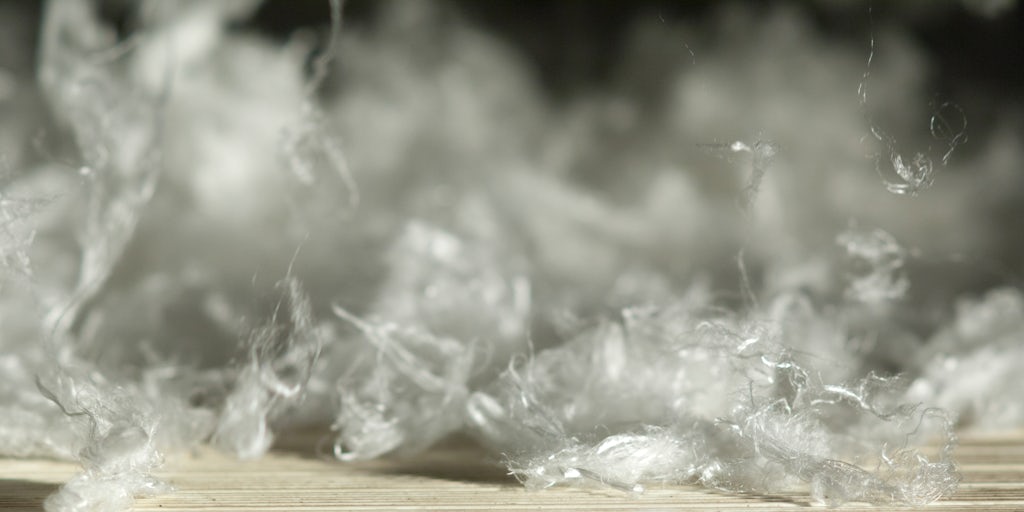Investing in Industry-Wide Biodegradability | Sponsored Feature
In supplying the global textile and nonwovens industry with cellulose, fiber manufacturer Lenzing is innovating and evolving its offering and processes in a bid to minimise the impact of its fibers on the environment.
Within its production processes, all Lenzing fibers are from wood pulp from sustainably managed sources, a renewable resource , while its biorefinery sites optimise the raw material wood to produce, not only pulp for its fibers, but also biorefinery products and co-products.
Today, Lenzing has doubled down in its efforts to foster further circularity. Testing from independent research laboratory Organic Waste Systems has certified that Lenzing Viscose, Modal and Lyocell fibers are biodegradable in all natural and industrial environments — in the soil, compost, as well as in both fresh and marine water.

Lenzing VP of global textiles business, Florian Heubrandner. Lenzing
Now, BoF hears from Lenzing’s VP of global textiles business, Florian Heubrandner, to learn about new innovations in the biodegradability space, the potential benefit to both brands and end consumers and why industry investment is critical.
Why does Lenzing prioritise biodegradability?
Every product has an end to its life. Even if you were able to recycle it over and over again, at some point, that process comes to an end. Fibers can only be recycled so many times before they become too short and it no longer works. Even during the life of the product, you will wash the garment many, many times. With each wash, it will shed fiber particles, which make their way to our oceans. Eventually a product becomes obsolete, and those fibers will have to go back into the earth somehow. This is when the biodegradability of product makes a significant difference. It means, whenever those fibers begin to shed, they will be gone, literally, in a few weeks.
How does biodegradability benefit the end consumer?
I think, first, we need to continue to educate consumers about wood-based cellulosic fibers. Tencel Lyocell, Tencel Modal and Lenzing Ecovero Viscose — these fibers don’t sound very natural to the end consumer. We have a responsibility to communicate the biodegradability of these.
At Lenzing, we’re [tracking] the growth of a more conscious and concerned consumer, who are considering the material make-up of their clothes. These biodegradable fibers can give end consumers the reassurances that the product they wear is not going to result in micro-plastics released into the environment with every wash or harm the environment when ending up in landfill or the ocean. It’s going to shed cellulosic fibers – like tiny pieces of wood. These will not harm the fish, the oceans, and even if the garment is discarded and not recycled — it will biodegrade in landfill. As consumers become more mindful and conscious, I believe this reassurance will become key to customer peace of mind.
What processes ensure Lenzing fibers biodegrade effectively?
It’s really the very nature of the product. All of our products are derived from wood. We’re using sustainably sourced wood as our starting point — the raw material. The wood is bought from sustainably managed forests, certified by the Programme for the Endorsement of Forest Certification (PEFC) or other wood certifications.
In converting this wood into fibers, we first transform the wood into pulp cellulose which is very similar to the cellulose you use for paper production — albeit a more costly process. This pulp becomes a white fiber, which is Lenzing’s end product. This end product is biodegradable because it’s cellulosic. Throwing away a t-shirt made of Lyocell fibers from Lenzing is like discarding a piece of wood. It will biodegrade within a few weeks.
If you took a 100 percent clothing made from Tencel Lyocell or Modal fibers, dug a hole and buried it in your garden, it will be gone within a few weeks. If it’s made from synthetics, the reality is it will be there for decades to hundreds of years.
What role can brands play in ensuring that materials biodegrade effectively?
From a brand perspective, there are many things they can do to support this process. One is to educate the end consumer, as they are closer to them than we are at Lenzing. Of course, we operate as a business-to-business company, but we also are now trying to reach those end consumers directly via social media, to educate them about the sustainability advantages of our products.
But before that education can begin, brands must first commit to the use of sustainable materials. Many brands have targets — sourcing X amount of sustainable materials by 2025 [or] by 2030 — but this has to be [a] broader strategy.
Even if brands are using our fiber as a raw material, as a main product, the garment still has sewing threads, zippers, buttons that are obviously not made of biodegradable materials. So, if a brand sells a 100 percent Tencel Lyocell t-shirts, but all the sewing threads are synthetic, the sewing threads will stay in the soil or in the ocean for years. For brands, it will be crucial to [consider] those smaller details in their approach to using more sustainable materials.
How significant is the investment for brands to alter their production practices?
What’s important to address first is the cost of making [this] investment. Our fibers are simply more expensive than polyester. Sustainably sourced wood is expensive, taking more manpower. The fiber is then treated slightly differently, despite the process being largely the same — spun, knitted or woven differently, dyed differently, leaving the cost element of the raw material in the final garment higher than synthetic materials.
One thing we consistently hear from our partners — the spinners, weavers, knitters, and so forth — is that these fibers are still considered a niche product, because the quantities aren’t very big. If you now need to stop your machine, put different fiber on it, restart the machines, all of this is resulting in additional handling turnover times and adding cost.
If the industry commits to larger volumes, to entire collections made out of biodegradable fibers, it will make the process more cost effective because entire value chain[s] will have economies of scale. The final additional cost will only be two or three percent. Then, by educating consumers about the sustainability advantages, brands can recover a few cents or a dollar from the retail price, [bolstering] a brand’s bottom line.
What further strategies are in play at Lenzing to foster more circular production methods?
Through a product we call Tencel with Refibra technology, we are taking cotton that would otherwise be ending up in landfill and recycling it. Instead of producing pulp out of wood, we’re producing the pulp out of this cotton and adding this pulp to our production processes. What we have eventually is fiber that is 70 percent wood pulp and 30 percent cotton pulp. Therefore, 30 percent of this product has a waste recycling circular element to it. Our plan is [to] up this figure to include more cotton waste.
The other thing is our commitment to science-based targets. We’re the first fiber company to commit to being carbon neutral by 2050, and to cut our specific carbon emissions by half by 2030. We have invested a lot into green energy, and we engage our suppliers to make sure that their energy consumption and their CO2 footprint comes down too.
We’ve now launched a product, a Tencel Lyocell, and Tencel Modal fibers with the lowest carbon footprint in the industry. It’s around 70 percent lower than our generic Modal or Lyocell because of green energy and supplier engagement. We then offset the very little bit of carbon footprint still left in the product with certified projects where we invest in green energy. All this is certified by a third party association we’re working with. It translates our science-based target commitment into a product, and these are made available to the brands and retailers.
What are Lenzing’s ambitions in this space over the medium term?
I think our North Star is to really make fashion as a whole more biodegradable. We have the products for it. All of our products are biodegradable, by their very nature. Our mission also to educate the value chain, to educate consumers and to educate the brands and retailers about it.
The fashion industry has a problem with plastic, a problem with synthetics and a real lack of biodegradability. We all know that millions of pounds of synthetic and polyester fibers are being produced every year and are oil-based. These will eventually end up in our environment, in our soils and seas. I think it’s now our role, even as a traditional business-to-business company, to educate the consumers and provide the solutions. At Lenzing, we want to play a pivotal role in moving an entire industry towards biodegradability.
This is a sponsored feature paid for by Lenzing as part of a BoF partnership.





